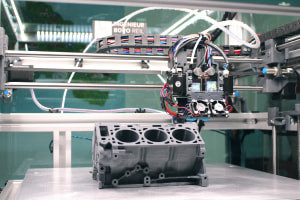Have you ever seen robots or robotic-type systems move some part of their body and wondered about the mechanism that allows them to make such movements? Actuators are responsible for such controlled action in a system. They work based on the signal they get from microprocessors. One such actuator is a motor. The motor is one of the major actuators used in mechatronics as it helps convert electrical signals to mechanical movements. However, motors are just one of the many actuators used in mechatronic systems. This course shows you how to use vital actuators in mechatronics. You will learn about actuation mechanisms and their applications. Discover how to design actuation mechanisms and the various instruments used in actuation. The course explains how cam and gear mechanisms operate as well as their implementation in mechatronic systems. The importance of bearings in mechatronics and mechanical factors to consider when selecting a motor for your mechatronics project are outlined.
Recognise the differences between hydraulic and pneumatic actuators, including their components and how they operate. You will learn about various types of valves, their symbols, and how to implement them in mechatronic systems. The course explains how relays and solenoids operate, as well as their applications in control systems. You will also be shown the basic principles of electric motors. Motors come in different designs thus their fundamental principles could vary. First, you will learn about the working principles of basic DC (direct current) motors, including the ones running on field coils or permanent magnets. In addition, the course explains how to control DC motors in a mechatronic system. Master the working principles of induction motors and synchronous motors, and learn the key principles of different types of stepper motors and their individual importance in mechatronics. Finally, examine the various data representation systems used in mechatronic systems.
Actuation systems are a vital part of mechatronic systems. Without them, no system would be able to perform mechanical movements. For example, robotic surgery wouldn't exist without actuation systems. If you don’t put actuation systems in place, the robot wouldn't be able to move its arms to perform surgical operations. The same goes for using robotic systems in manufacturing companies. It is essential for anyone looking to become a specialist in mechatronics to understand how actuation systems work so you can select the suitable actuator for your mechatronics designs correctly. For example, if you are designing a mechatronic system that should move objects at precise angular increments, what type of motor would you go for? Selecting when you only understand the working operation of the various motors out there will help eliminate errors. Taking this course on actuation systems will help you with this task. So, dive in and start learning today.
What You Will Learn In This Free Course
View All Learning Outcomes View Less All Alison courses are free to enrol, study, and complete. To successfully complete this Certificate course and become an Alison Graduate, you need to achieve 80% or higher in each course assessment.
Once you have completed this Certificate course, you have the option to acquire an official Certificate, which is a great way to share your achievement with the world.
Your Alison certificate is:
- Ideal for sharing with potential employers.
- Great for your CV, professional social media profiles, and job applications.
- An indication of your commitment to continuously learn, upskill, and achieve high results.
- An incentive for you to continue empowering yourself through lifelong learning.
Alison offers 2 types of Certificate for completed Certificate courses:
- Digital Certificate: a downloadable Certificate in PDF format immediately available to you when you complete your purchase.
- Physical Certificate: a physical version of your officially branded and security-marked Certificate
All Certificate are available to purchase through the Alison Shop. For more information on purchasing Alison Certificate, please visit our FAQs. If you decide not to purchase your Alison Certificate, you can still demonstrate your achievement by sharing your Learner Record or Learner Achievement Verification, both of which are accessible from your Account Settings.











 Avg. Hours
Avg. Hours  Contains Video
Contains Video  CPD Accredited
CPD Accredited 
 Total XP:
Total XP: 
 Knowledge & Skills You Will Learn
Knowledge & Skills You Will Learn 







